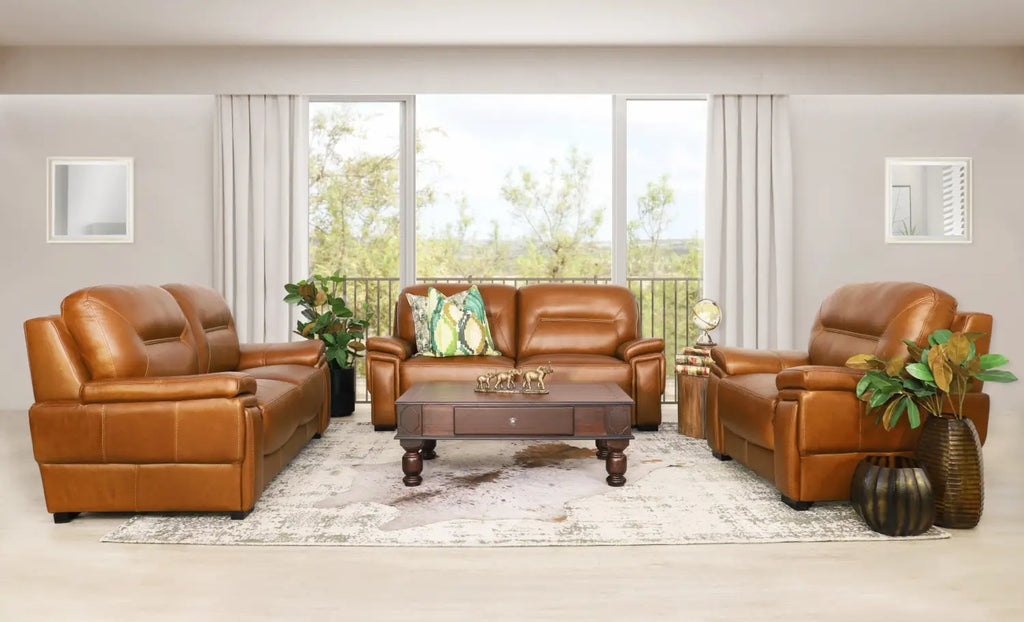Couches
Living
Decor
Understanding the Natural Imperfections of Leather Furniture
February 21, 2025 3 min read
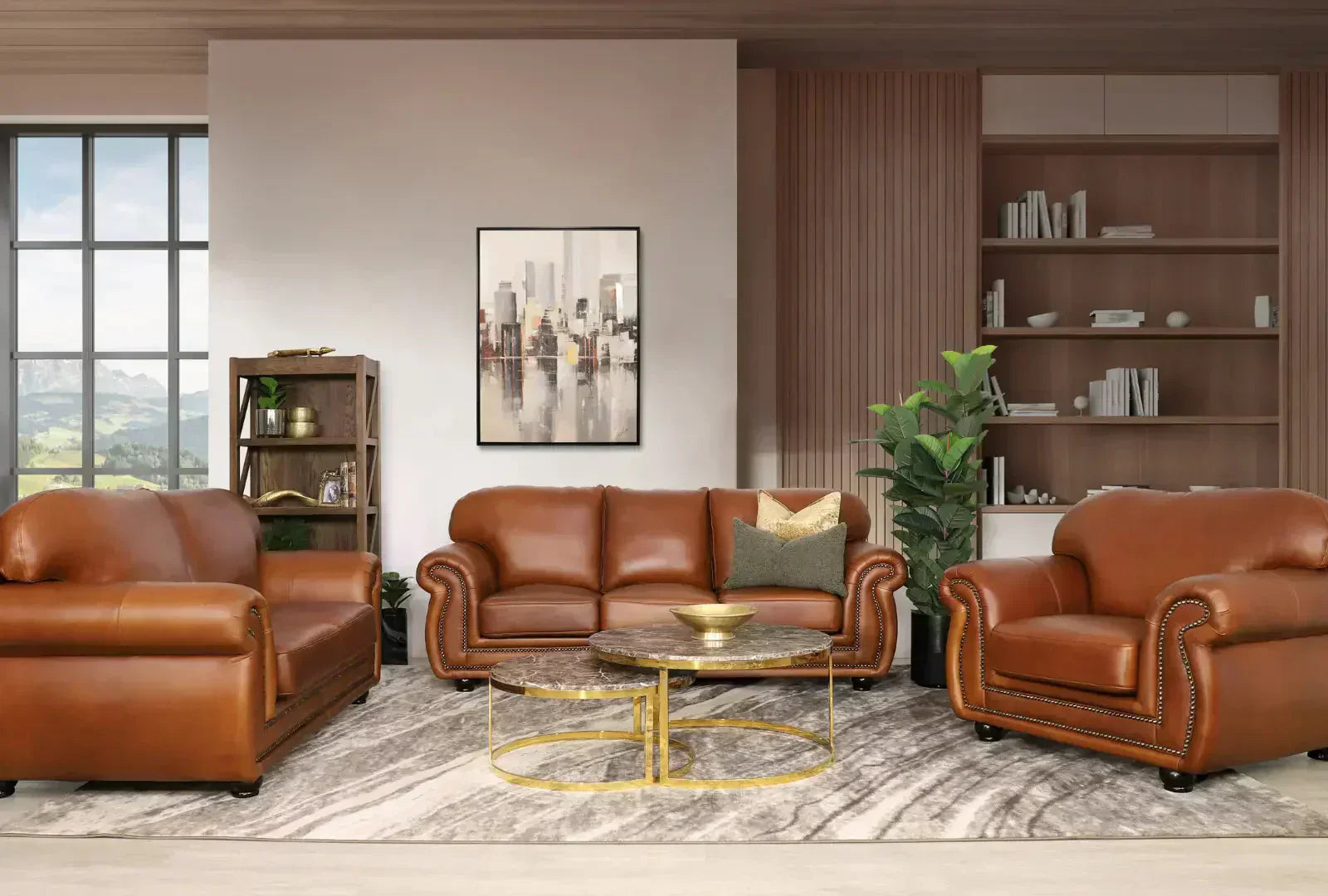
Leather furniture is synonymous with elegance, durability, and luxury. However, it’s important to remember that leather is a natural material—essentially skin. Like human skin, leather can exhibit minor imperfections that add to its uniqueness and character. These natural marks and variations do not detract from the quality of the leather but rather tell the story of the material’s organic origins. Here's an educational guide to help you understand these imperfections:
1. Colour Variations
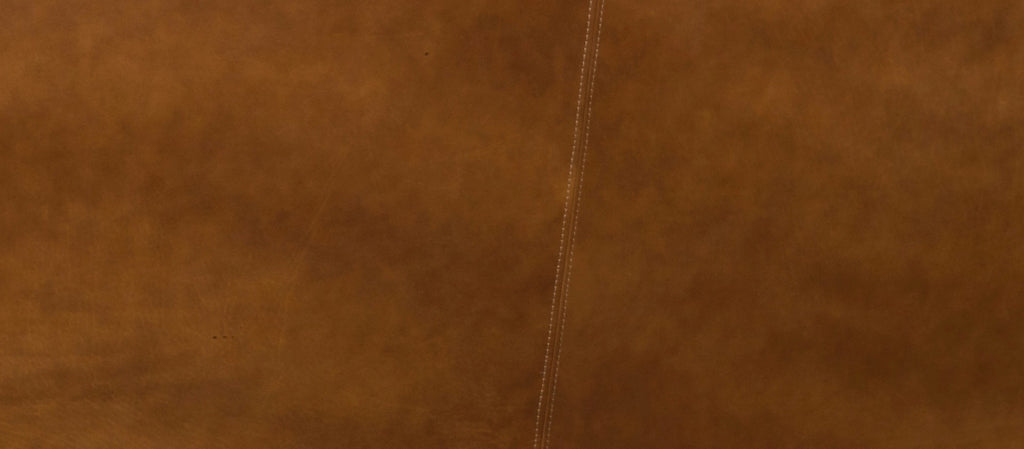
Leather is a natural product that can show subtle colour variations, even within the same hide. These colour differences can arise from factors such as the animal's diet, the tanning process, or even environmental influences during the animal's life. You may notice darker or lighter patches, which add richness and depth to the leather. These variations are part of what makes each piece of leather furniture one-of-a-kind, and they enhance its character.
2. Vein Marks
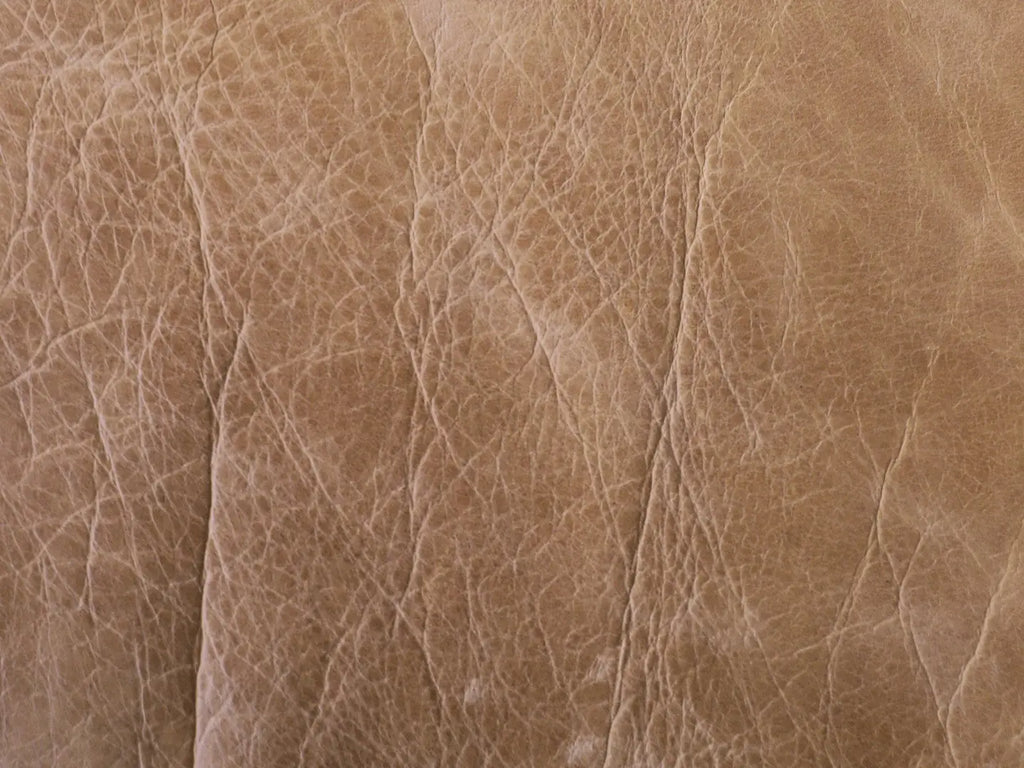
Vein marks appear as faint lines or marbling on the surface of the leather, caused by the animal’s natural vein structure. These delicate patterns are a hallmark of high-quality, full-grain leather and contribute to its rich, organic beauty. Rather than being flaws, vein marks are an indicator of the authenticity and uniqueness of real leather.
3. Stretch Marks
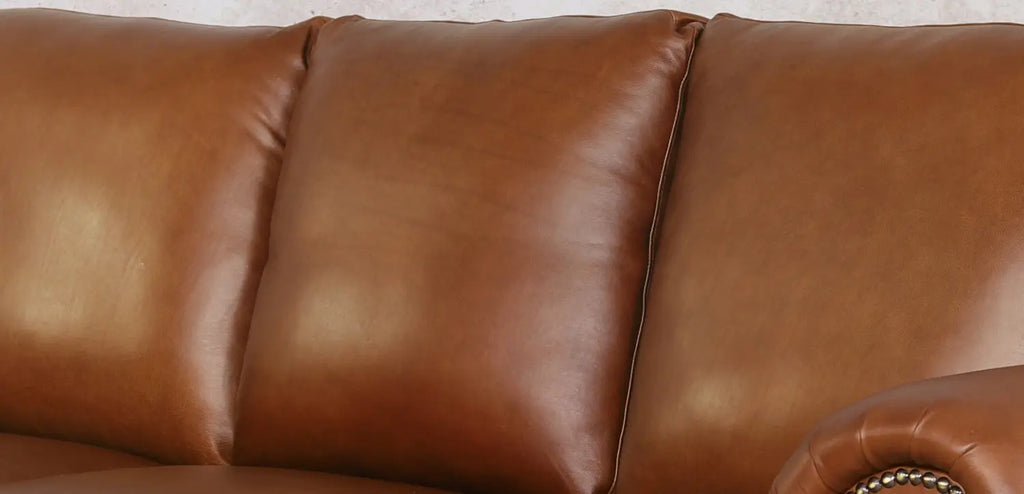
Just like human skin, leather has a certain amount of elasticity. Stretch marks can appear when leather is subjected to tension or pressure, such as when it’s upholstered on furniture. These marks can be slightly lighter or darker than the surrounding leather and often resemble faint lines or creases. While stretch marks are a natural occurrence and part of the leather's life cycle, they tend to become less noticeable over time, as the leather continues to wear in and adapt to its environment.
4. Tick or Insect Bites and Skin Conditions
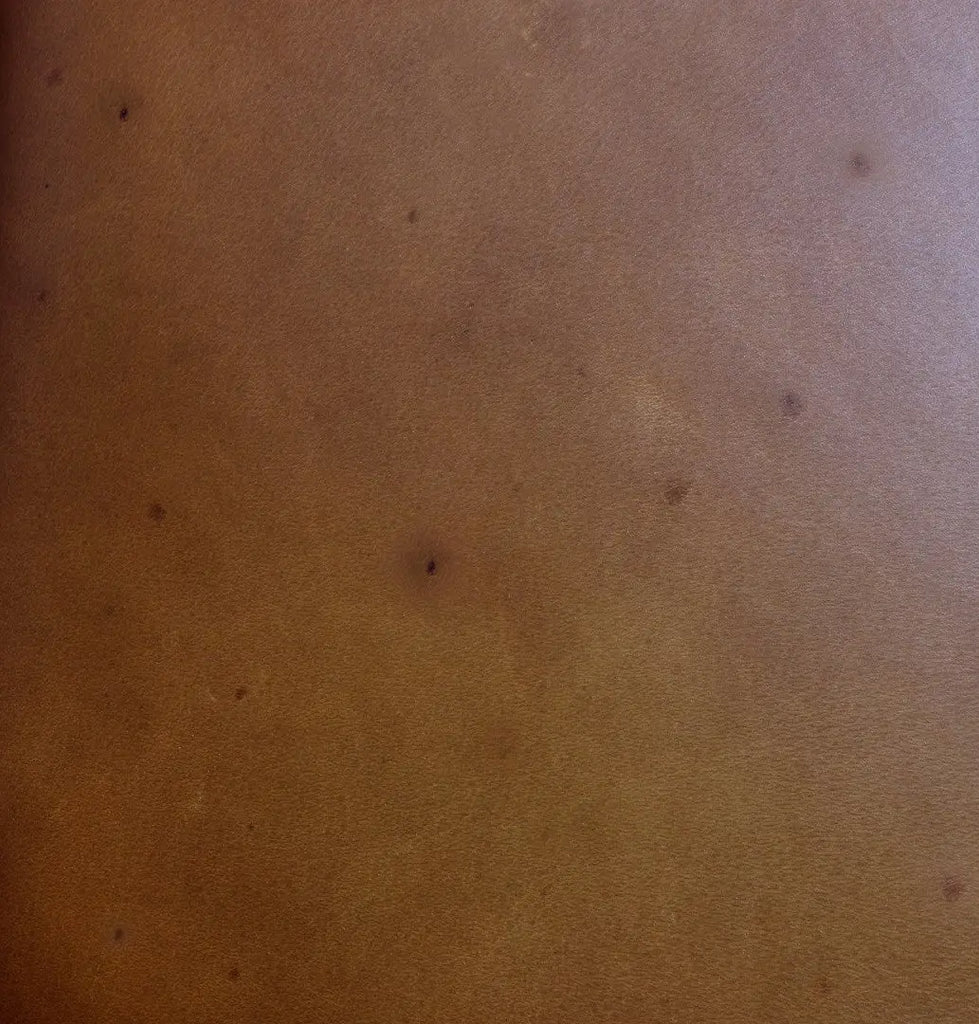
Insects are part of the natural environment where animals graze, and occasionally, they leave small marks on the leather during the animal's life. These marks are known as insect bites or scars. While they may appear as tiny indents or darker spots, they are completely normal and add to the individuality of the leather. The animal's skin condition, including healed scars from previous injuries, can also cause subtle variations in texture or colour. These imperfections do not affect the leather’s durability or functionality but enhance its natural look.
5. Scars & Scratch Marks
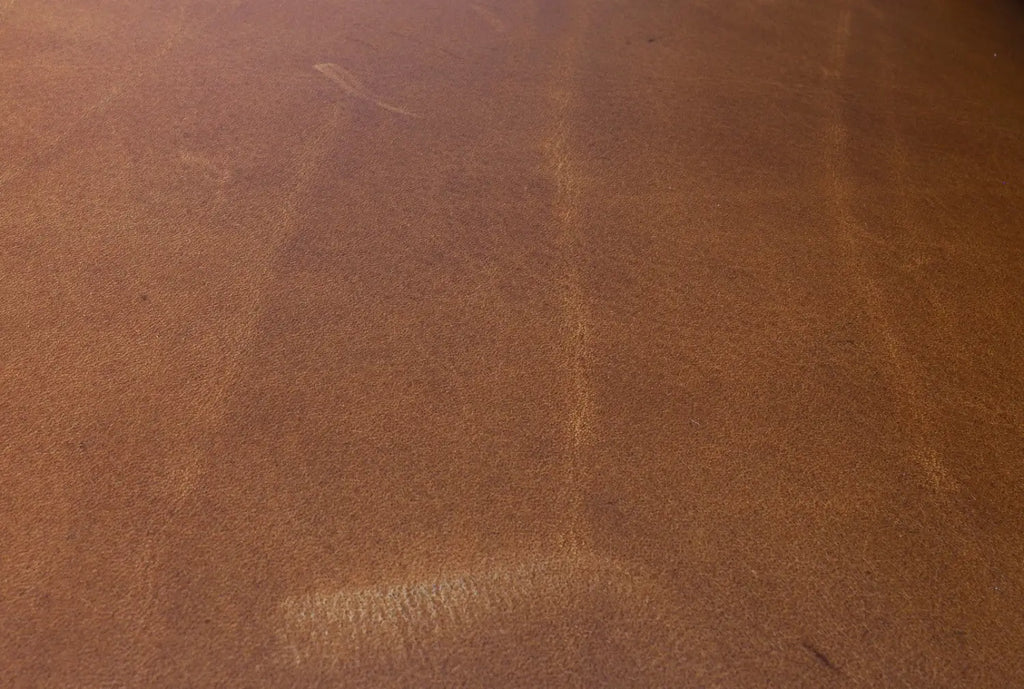
Leather furniture is synonymous with elegance, durability, and luxury, but it’s important to remember that leather is a natural material, essentially skin. Like human skin, it can exhibit imperfections that add to its uniqueness and character. Scars and scratch marks are common examples. Scars can result from healed wounds such as cuts or scratches, while scratch marks may occur naturally during the animal’s life. These marks, whether subtle or more pronounced, tell the story of the leather’s organic origins and don’t detract from its quality. They contribute to the richness and individuality of each piece, making your leather furniture truly one-of-a-kind. Over time, these imperfections may soften or blend in, enhancing the leather’s overall patina and charm.
6. Brand Marks

Some cattle are branded as a means of identification, and these marks may occasionally be visible on the leather. While less common, brand marks can add a distinctive character to certain leather pieces, serving as a unique hallmark of the material’s origin.
Embracing the Beauty of Natural Leather
While leather may feature imperfections such as insect bites, scratch marks, stretch marks, or colour variations, these are a part of the material’s natural beauty. Embracing these imperfections will allow you to appreciate the uniqueness and longevity of your leather furniture. Over time, these marks may even blend in or soften, contributing to the overall charm and character of the piece. Leather furniture is meant to be enjoyed for many years, and each imperfection adds to its story, making it your own.

